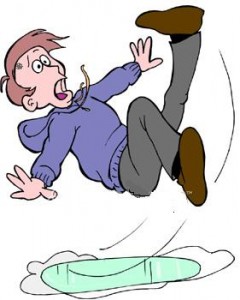Maintain Your Property To Prevent Snow Damage
If you find snow-related damage to your home as you are digging out from a snow storm, keep in mind the insurance industry’s approach to paying for water-related damages. Snow, after all, is just frozen water and insurers have canceled policies, reduced coverage and raised rates to combat the growing numbers of claims paid for water- and moisture-related damage. Insurers also encourage policy holders to do what they can to avoid the need for such claims.
If you are a repeat “offender” with previous moisture-related claims or didn’t previously take steps to prevent or at least minimize snow damage and damage that could result when snow melts, you could lose your policy, get hit with higher premiums or discover the snow-related damage isn’t covered.
Mold is an issue right now. If you didn’t clean up that puddle of water for three months and it creates mold, it could get tricky. The insurance industry expects you take care of your home as much as possible.
Snow And Ice Removal
 Legal suits stemming from falling icicles or slips or falls on your property are covered, but if you didn’t remove snow or ice from your property within a reasonable period — in some cases, including the sidewalk in front of your home, you could be liable for negligence. Check with your local jurisdiction to determine if there are mandates that require you to remove snow and ice within a given period. Insurance companies do consider negligence when it comes to maintaining your property in a way to help prevent damage or injuries.
Legal suits stemming from falling icicles or slips or falls on your property are covered, but if you didn’t remove snow or ice from your property within a reasonable period — in some cases, including the sidewalk in front of your home, you could be liable for negligence. Check with your local jurisdiction to determine if there are mandates that require you to remove snow and ice within a given period. Insurance companies do consider negligence when it comes to maintaining your property in a way to help prevent damage or injuries.
You want to maintain your home throughout the snow storm. Pile snow away from your home, keep the gutters clean as it is melting. Pipes that are exposed should be insulated to prevent them from freezing and thawing and breaking.
To prevent snow storm-related damage, the institute also recommends that you:
- Watch for snow accumulation on your roof, where blowing snow collects. Consult with a professional for safe snow removal that won’t damage your roof.
- Be wary of snow or rain that freezes in gutters causing an “ice dam” that later can damage ceilings and roofing structure as melting ice spreads under roof shingles. Keep your gutters clean of leaves and debris to help prevent ice dams.
- If you have to, hire a landscaping company to remove tree and plant branches that become heavy with snow. Remove icicles hanging from gutters and over walkways.
- Keep an eye on nearby sewers and drains. As snow melts, water can back-up sewers and clog drains with debris, resulting in flooding, that may not be covered by insurance. Notify local offices about clogged drains and sewers.
- Keep your home warm. The temperature in the home should be at least 65 degrees to prevent the pipes from freezing.
